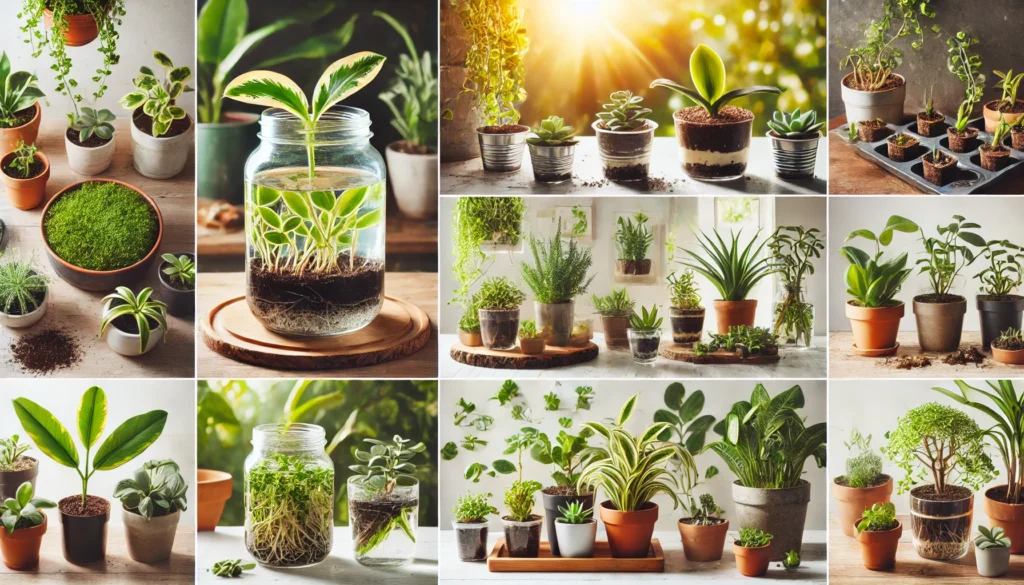
Quickest Rooting Houseplants: Top Plants for Fast and Easy Propagation
If you’re looking to expand your indoor garden quickly, knowing the quickest rooting houseplants can make all the difference. Propagating houseplants is a rewarding way to multiply your collection or share plants with friends, but some plants are naturally faster at rooting than others. In this article, we’ll highlight the top houseplants that root quickly, giving you the perfect starting point for a flourishing indoor garden. Whether you’re a beginner or an experienced plant enthusiast, these plants offer easy and fast propagation, helping you grow new greenery in no time!
Table of Contents
ToggleUnderstanding Plant Propagation
Plant propagation is the process of growing new plants from existing ones, allowing you to expand your garden or create more of your favorite plants. There are two primary types of plant propagation: sexual (through seeds) and asexual (through cuttings, division, or grafting). Each method has its advantages, and understanding when and how to use them can help you succeed.
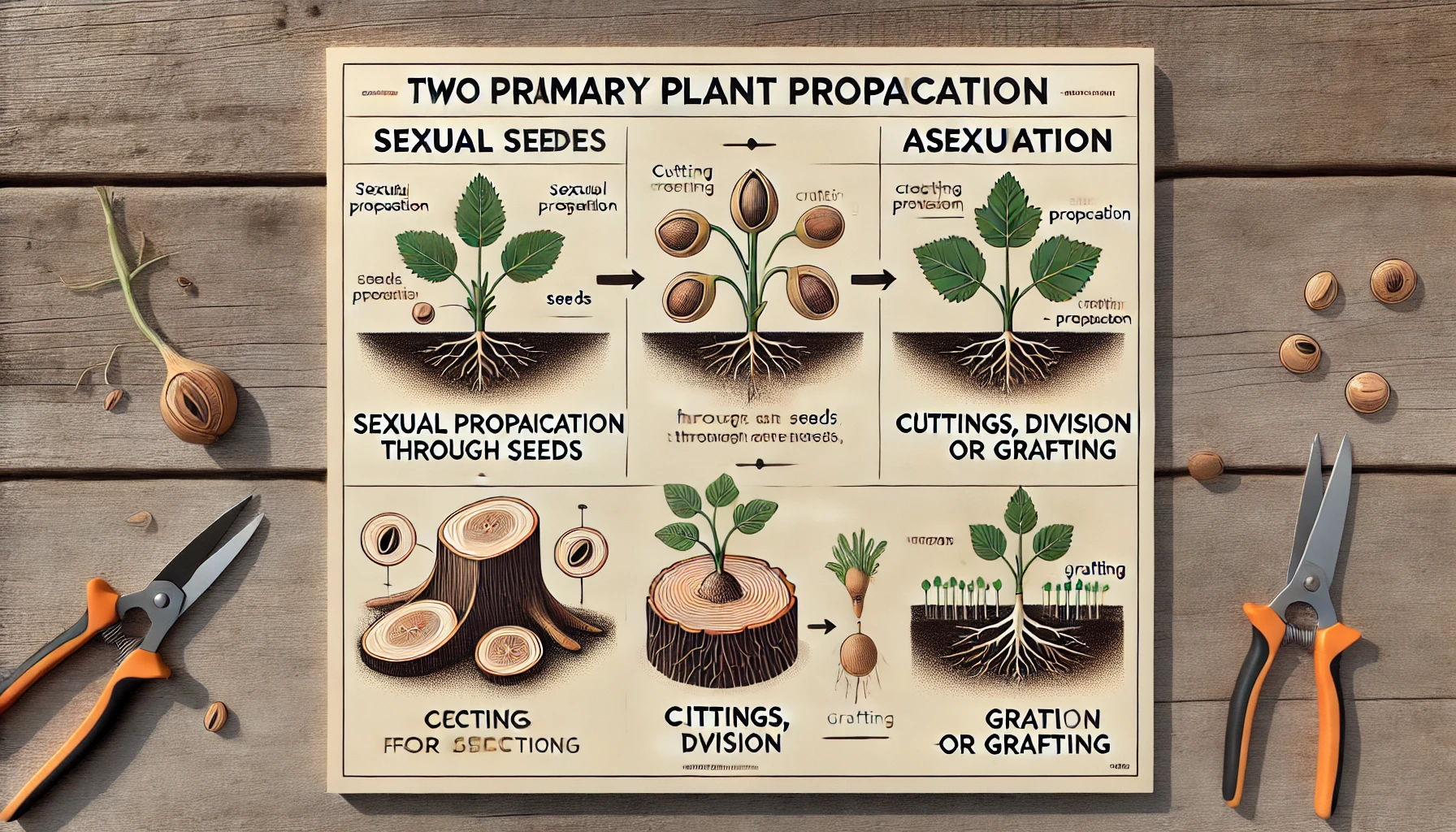
Sexual Propagation (Seed Planting)
Sexual propagation involves growing plants from seeds. It’s the most common method for many plants, especially flowers and vegetables. While this method requires patience, it offers genetic diversity, which can result in stronger plants. To get started, ensure you’re using high-quality seeds and follow the recommended planting depth and spacing for each species.
Asexual Propagation (Cloning Plants)
Asexual propagation involves creating new plants from parts of the parent plant, such as stems, leaves, or roots. This method produces genetically identical offspring, meaning the new plant will have the same traits as the parent. Common techniques include:
- Cuttings: Snipping a part of a stem or leaf and allowing it to root in soil or water.
- Division: Separating clumps of plants (like hostas or irises) and planting each piece.
- Layering: Bending a stem to the ground, where it roots before being severed from the parent plant.
Each method has its specific needs, but overall, asexual propagation is quicker and guarantees a plant that’s identical to the original. With the right care, you can grow many new plants in no time.
By understanding these propagation methods, you can select the best approach for your plants, ensuring they thrive and multiply.
Characteristics of Quick-Rooting Houseplants
Quick-rooting houseplants are known for their ability to develop strong, healthy roots in a short period. These plants make excellent choices for beginners or anyone looking to expand their indoor garden with minimal effort. Here’s what makes them stand out:
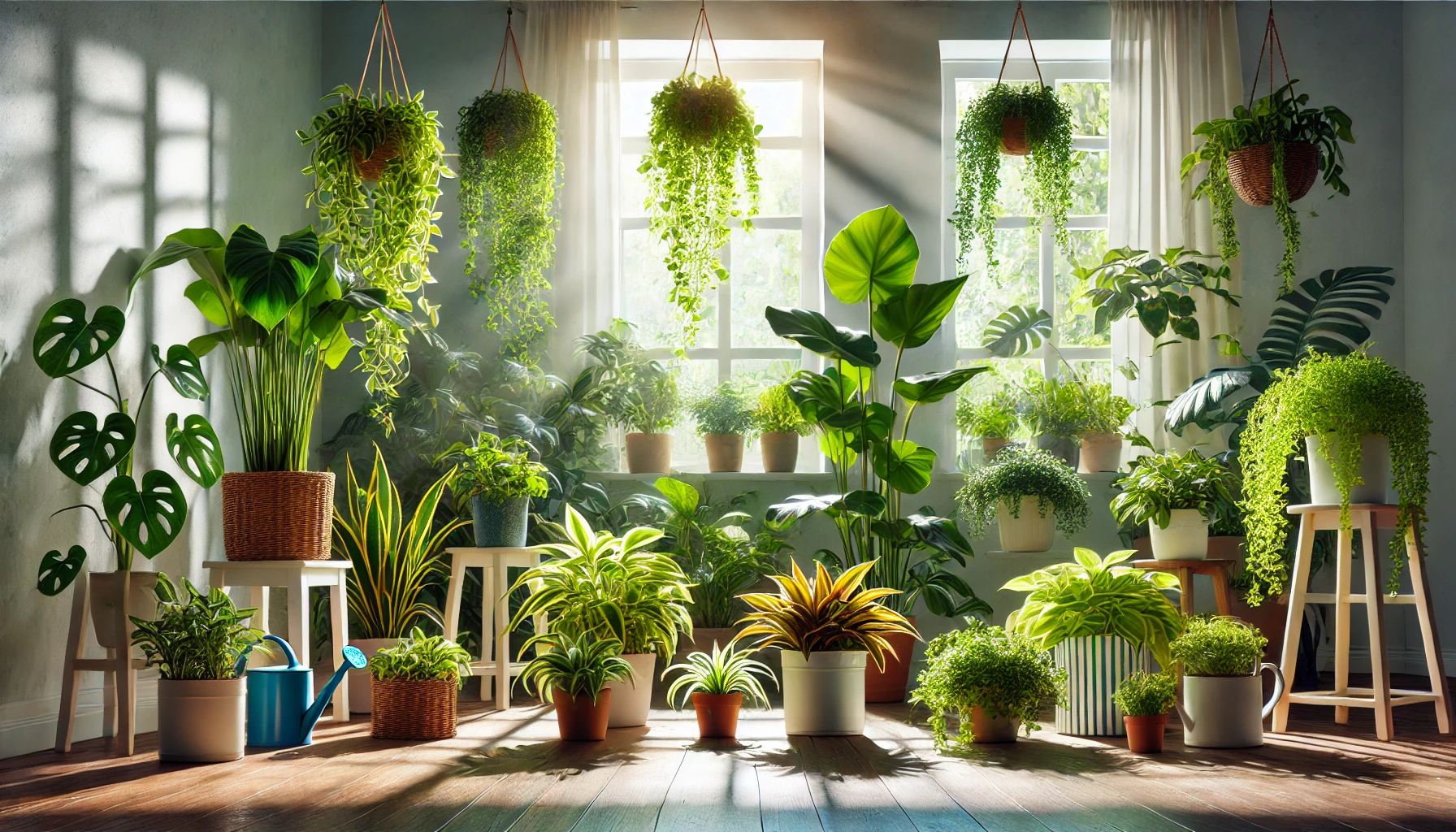
Fast Growth Rate
Quick-rooting plants are typically fast-growing, allowing them to establish a strong root system quickly. This ensures they adapt well to their environment and recover from transplanting or pruning faster than slower-growing varieties.
Resilient to Changes
These plants are adaptable, able to thrive in varying conditions. Whether it’s changes in light, humidity, or temperature, quick-rooting houseplants can bounce back quickly, making them ideal for beginners or people with less-than-perfect indoor environments.
Low Maintenance Needs
Because of their rapid root development, these plants are often more forgiving of occasional care mistakes like overwatering or under-fertilizing. Their robust root system helps them to absorb nutrients efficiently, even with less attention.
Easy Propagation
One of the biggest benefits of quick-rooting houseplants is how easily they can be propagated. Cuttings from these plants root faster in water or soil, making them an excellent choice for creating new plants for your home.
Versatility
Quick-rooting houseplants are highly versatile, suitable for various indoor conditions. They thrive in a range of light conditions and can grow in different types of soil, making them ideal for people with diverse living situations.
By choosing quick-rooting houseplants, you can enjoy a lush, thriving indoor garden without requiring much effort or experience. Their ability to quickly establish strong roots makes them an excellent choice for those looking for a low-maintenance, high-reward plant collection.
Top Quickest Rooting Houseplants
If you’re looking to propagate houseplants quickly, selecting the right species is key. Some plants root faster than others, making them perfect choices for beginners or anyone eager to expand their indoor garden. Here’s a list of the quickest rooting houseplants that will have you seeing new growth in no time.
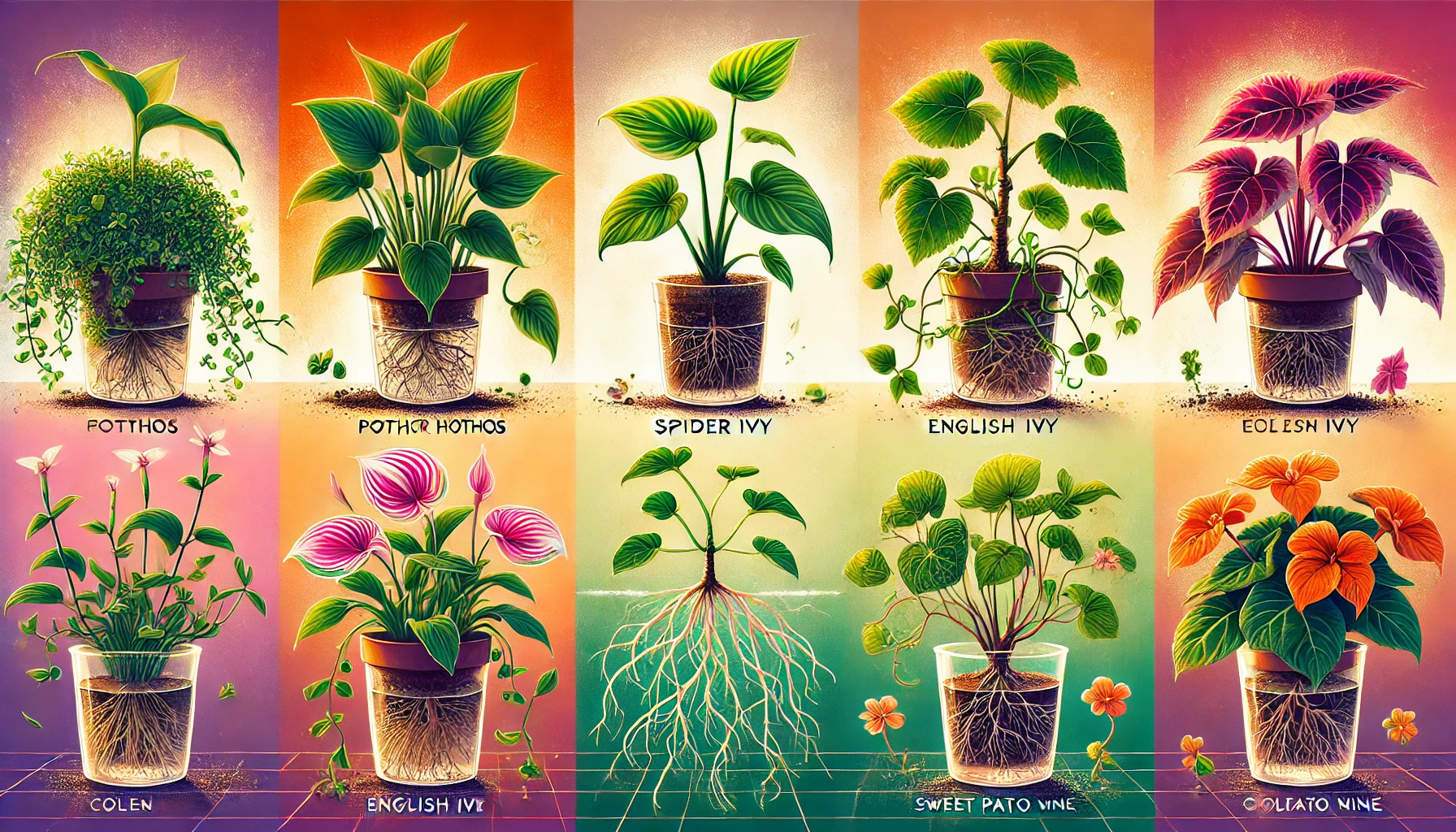
1. Pothos (Epipremnum aureum)
Pothos is a popular houseplant known for its fast growth and easy propagation. Simply cut a stem with at least one node, place it in water, and within a week or two, you’ll see roots starting to form. Pothos thrives in various light conditions, making it an ideal choice for almost any home.
2. Spider Plant (Chlorophytum comosum)
Spider plants are another fast-rooting favorite. Their “babies” or offshoots can be placed directly in soil or water for propagation. With just a few weeks in water, you’ll notice roots developing, and soon you can replant them in soil for a fresh new plant.
3. English Ivy (Hedera helix)
English Ivy is not only a beautiful, trailing vine but also one of the quickest houseplants to root. Cut a healthy vine with a few leaves and place it in water. Within 10-14 days, roots should start to appear. This plant is perfect for anyone looking to add greenery with minimal effort.
4. Coleus (Solenostemon scutellarioides)
Coleus is known for its vibrant foliage, and it’s a breeze to propagate. Simply snip off a stem with a few leaves, place it in water, and watch the roots form within 7-10 days. Coleus prefers bright, indirect light and grows quickly once rooted.
5. Sweet Potato Vine (Ipomoea batatas)
The sweet potato vine is an excellent choice for quick rooting. Place a cutting in water, and it will form roots in just a few days. Its vibrant green or purple leaves make it a stunning addition to any space.
6. Philodendron (Philodendron spp.)
Philodendrons are renowned for their low-maintenance care and speedy rooting. They are highly adaptable and grow quickly when propagated in water. With regular trimming and placement in water, you’ll soon have multiple new plants to enjoy.
Key Tips for Faster Rooting:
- Use Clean Tools: Always use sharp, clean scissors to avoid contaminating your cuttings.
- Change Water Regularly: If rooting in water, change the water every few days to encourage faster root growth.
- Warm Environment: Keep cuttings in a warm, humid environment to speed up the rooting process.
With these fast-rooting houseplants, you’ll have a thriving indoor garden in no time! Whether you’re starting a new plant collection or looking to propagate your existing plants, these varieties are the perfect choice for quick success.
How to Propagate These Houseplants Successfully
Propagating houseplants is an easy and rewarding way to expand your plant collection. Whether you’re looking to share your favorite plants with friends or simply grow new ones for your own space, propagation is a simple process when done right. Here’s a practical guide to help you successfully propagate your houseplants:

1. Choose the Right Time and Plant
Start by selecting a healthy, mature plant that is actively growing. Spring or early summer is often the best time to propagate, as plants are more likely to root successfully during their growing season.
2. Methods of Propagation
There are a few common methods for propagating houseplants:
- Stem Cuttings: For most houseplants, simply cut a healthy stem with a few leaves attached. Place the cutting in water or directly in soil.
- Leaf Cuttings: Plants like succulents and snake plants can be propagated from just a leaf cutting. Allow the cutting to callous over before planting in soil.
- Division: Some plants, like peace lilies or spider plants, can be propagated by dividing the root ball. Carefully separate the plant into smaller sections, each with its own roots.
3. Create the Right Environment
After cutting your plant, place the propagation in a warm, humid environment. If propagating in water, use a glass jar or vase and keep it in indirect sunlight. If using soil, make sure it is moist and well-draining. A humidity dome or clear plastic bag can help maintain humidity levels.
4. Be Patient
While some plants root quickly, others take time. Roots typically take 2–6 weeks to develop, depending on the plant and propagation method. During this period, keep the cutting in a location that is warm, with indirect sunlight, and be patient.
5. Transplanting and Care
Once roots are well-established, you can transplant your new plant into its permanent pot. Continue to care for it as you would a mature plant, ensuring it gets enough light, water, and nutrients.
By following these simple steps, you’ll be able to propagate your favorite houseplants with ease, growing your collection and sharing the beauty of nature with others.
Creating Ideal Conditions for Fast Rooting
To successfully propagate plants through cuttings, creating the right conditions for fast rooting is crucial. Here’s how you can help your cuttings root quickly and effectively:
Choose the Right Cutting
Select a healthy, semi-hardwood cutting (partially mature but still flexible). This type of cutting roots faster than softwood or hardwood.
Proper Environment Temperature
Keep the cuttings in a warm, consistent temperature of around 65-75°F (18-24°C). Warmth accelerates root formation but avoid placing them in direct sunlight, which can cause stress.
Humidity is Key
High humidity helps prevent the cutting from drying out. Use a humidity dome or cover the cuttings with a plastic bag to maintain moisture. Ensure there’s airflow to avoid mold growth.
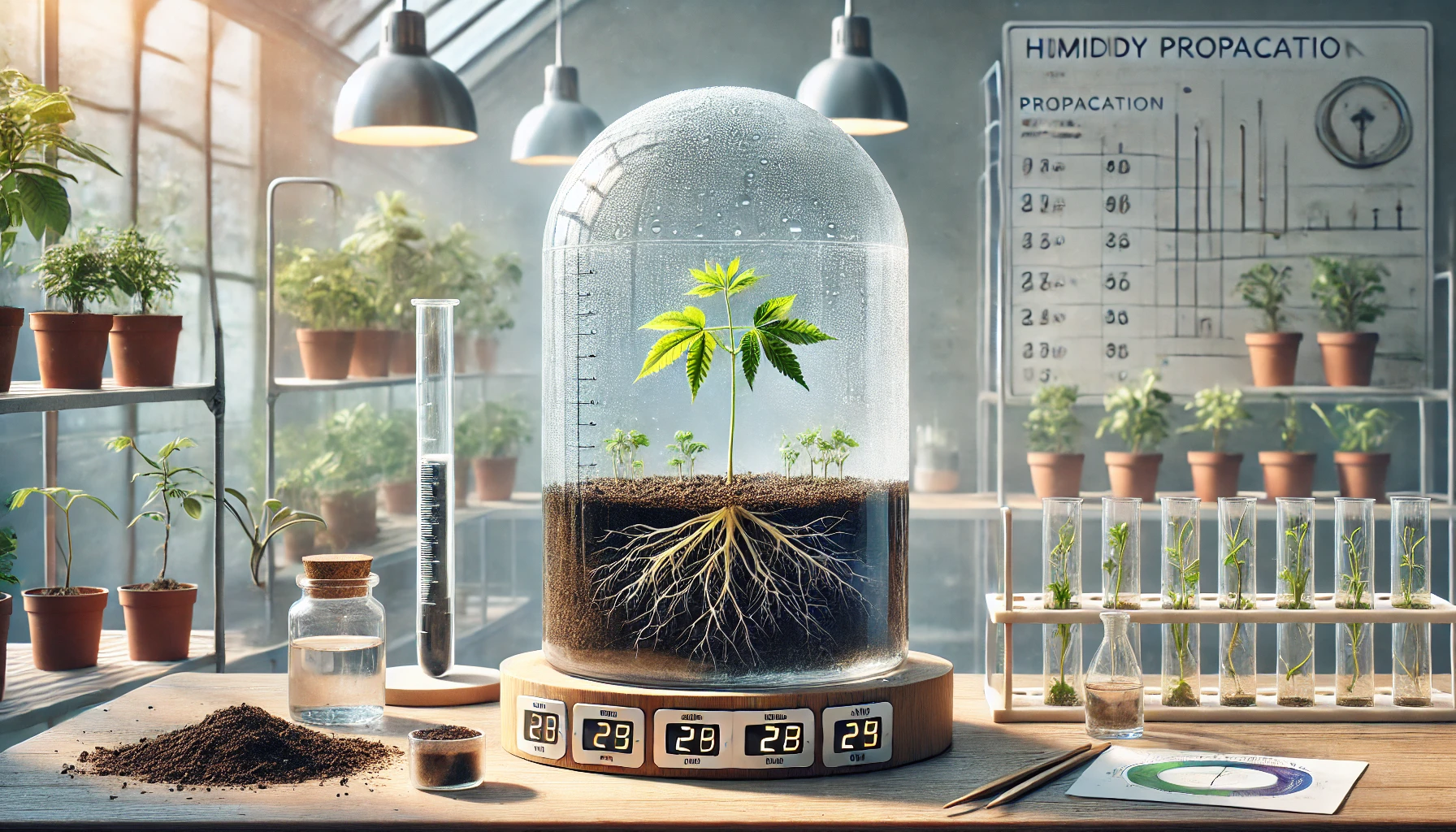
Well-Drained, Moist Soil
Use a well-draining, light soil mix, such as a combination of perlite and peat moss. This allows for proper moisture retention without waterlogging, which can cause rot.
Rooting Hormones
Applying rooting hormone to the cut end encourages faster root development. While optional, it can significantly boost success rates, especially for more challenging plants.
Watering and Drainage
Keep the soil evenly moist but not soaked. Overwatering can lead to rot, while underwatering slows down root growth. Make sure the container has drainage holes to prevent excess water accumulation.
Patience and Observation
Check the cuttings regularly for root growth. Roots typically develop in 2-4 weeks, depending on the plant type. Avoid disturbing the cuttings too much to give them the best chance to establish strong roots.
By creating these ideal conditions, you’ll improve the chances of fast and successful rooting, ensuring healthy, thriving new plants.
Troubleshooting Common Propagation Problems
Propagation can be an exciting way to grow new plants, but it doesn’t always go smoothly. Here are some common issues you might face and how to solve them:
Failed Rooting
If your cutting isn’t rooting, the problem could be with the environment. Ensure the cutting is in a warm, humid space and that the soil is consistently moist (but not soggy). Try using a rooting hormone to stimulate growth.
Mold or Rot
Overwatering or poor drainage can lead to mold or rot. Make sure the pot has drainage holes, and avoid using overly damp soil. If you notice mold, remove the affected cutting and let it dry out before replanting in fresh soil.
Yellowing Leaves
Yellowing often indicates stress. It could be from too much water, lack of light, or nutrient deficiencies. Adjust watering schedules, ensure your cutting gets enough indirect sunlight, and consider feeding with a balanced fertilizer.

Wilting or Drooping
Wilting usually happens due to lack of water or humidity. Check the soil moisture and increase humidity around your cutting using a humidity dome or misting. If the soil is dry, water thoroughly.
Stunted Growth
Slow or stunted growth can be caused by root damage during propagation or insufficient light. Give the cutting enough light and check the roots for any signs of damage. If the roots are healthy, transplant the cutting into larger pots for more space to grow.
By identifying the problem early and adjusting your approach, you can ensure a successful propagation process and enjoy your new plants thriving!
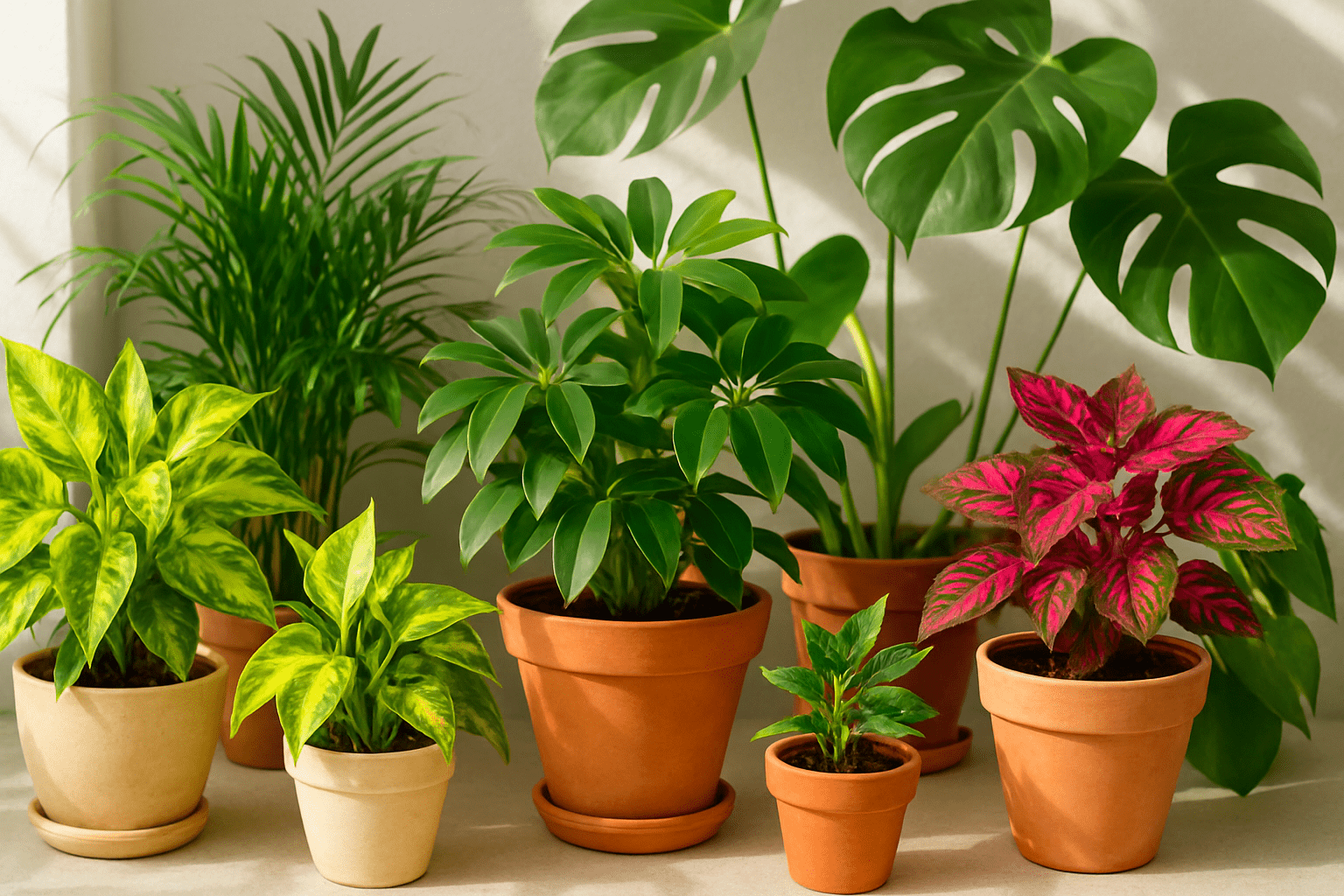
In conclusion, choosing the quickest rooting houseplants is a fantastic way to expand your indoor garden with minimal effort and time. With the right plants and a bit of patience, you can quickly enjoy the satisfaction of watching your new cuttings grow into thriving plants. By following the simple propagation techniques shared in this article and creating the ideal conditions, you’ll ensure success every time. Remember, propagation is not just about growing more plants—it’s about building a deeper connection with your greenery. So, start with one of these easy-to-propagate houseplants, and watch your garden flourish! Happy propagating!
Frequently Asked Questions(FAQ)
What are the quickest rooting houseplants?
The quickest rooting houseplants include Pothos, Spider Plants, Philodendron, Snake Plants, Tradescantia, English Ivy, Mint, and African Violets. These plants root quickly, making them perfect for propagation, even for beginners.
How long does it take for the quickest rooting houseplants to root?
The rooting time for these plants can vary. Typically, Pothos and Spider Plants can root in 1-2 weeks, while others like Philodendron or Tradescantia may take 2-4 weeks, depending on the environmental conditions.
What is the easiest way to propagate the quickest rooting houseplants?
The easiest way to propagate these plants is by using stem cuttings. For most houseplants, cuttings can be placed in water or directly in soil until roots develop. Ensure the cutting has a node, as this is where the roots will grow from.
Do I need rooting hormone for quickest rooting houseplants?
Rooting hormone can help speed up the rooting process and encourage more successful root development, but it’s not strictly necessary for many of the quickest rooting houseplants. Water propagation works well for most of these plants, and rooting hormone can be used to boost success rates, especially for slower rooters.
What environmental conditions are ideal for rooting houseplants quickly?
For optimal rooting, keep your cuttings in a warm, humid environment with indirect light. Maintain consistent moisture, and avoid direct sunlight, which can cause the cuttings to dry out.
Can I propagate the quickest rooting houseplants year-round?
Yes, you can propagate most of these houseplants year-round. However, the ideal time for propagation is during the warmer months when plants are actively growing. Rooting may be slower during the winter when the plants are dormant.
What should I do if my cutting isn’t rooting?
If your cutting isn’t rooting, check the moisture level, lighting, and temperature. Sometimes cuttings fail due to poor environmental conditions. Try changing the water or soil, and ensure the cutting is getting enough indirect sunlight and warmth.
Are these plants suitable for beginners?
Yes, the quickest rooting houseplants are ideal for beginners. They are easy to propagate and require minimal maintenance. Their rapid root growth makes them a great starting point for anyone new to plant propagation.
